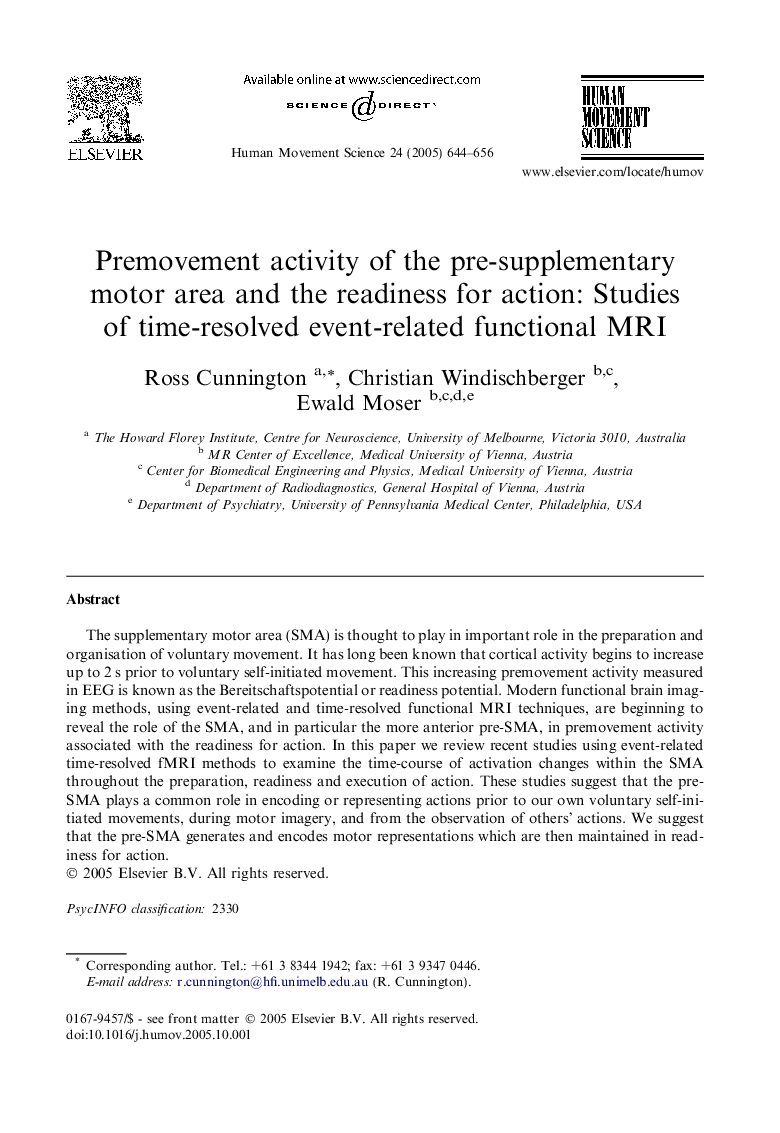| Article ID | Journal | Published Year | Pages | File Type |
|---|---|---|---|---|
| 9722450 | Human Movement Science | 2005 | 13 Pages |
Abstract
The supplementary motor area (SMA) is thought to play in important role in the preparation and organisation of voluntary movement. It has long been known that cortical activity begins to increase up to 2Â s prior to voluntary self-initiated movement. This increasing premovement activity measured in EEG is known as the Bereitschaftspotential or readiness potential. Modern functional brain imaging methods, using event-related and time-resolved functional MRI techniques, are beginning to reveal the role of the SMA, and in particular the more anterior pre-SMA, in premovement activity associated with the readiness for action. In this paper we review recent studies using event-related time-resolved fMRI methods to examine the time-course of activation changes within the SMA throughout the preparation, readiness and execution of action. These studies suggest that the pre-SMA plays a common role in encoding or representing actions prior to our own voluntary self-initiated movements, during motor imagery, and from the observation of others' actions. We suggest that the pre-SMA generates and encodes motor representations which are then maintained in readiness for action.
Related Topics
Life Sciences
Neuroscience
Cognitive Neuroscience
Authors
Ross Cunnington, Christian Windischberger, Ewald Moser,
